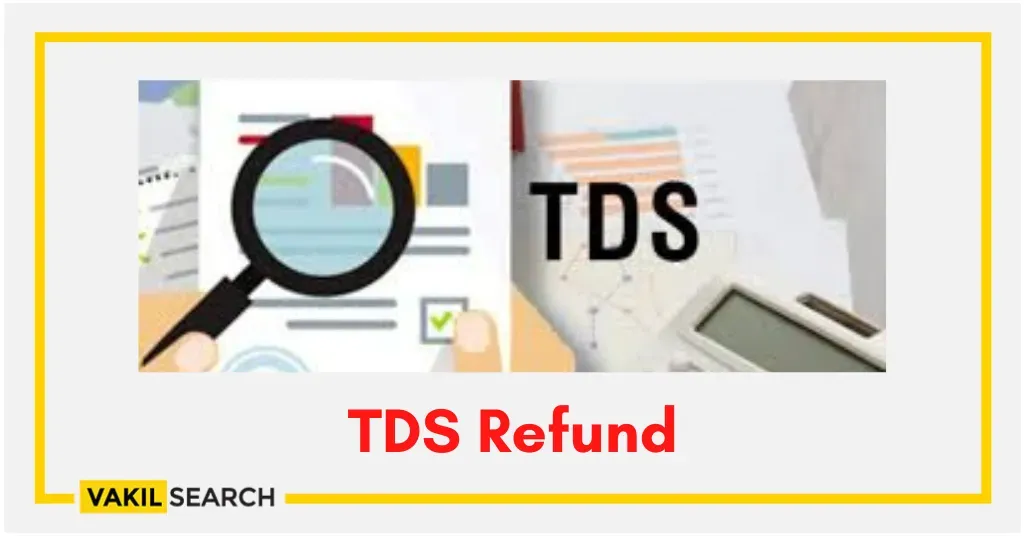The recent discussions surrounding TDS refund rules indicate a significant shift towards a more taxpayer-friendly approach under the proposed Income Tax Bill 2025. Traditionally, many taxpayers have faced the cumbersome requirement of filing income tax returns (ITRs) just to claim a TDS refund, which can be particularly burdensome for those whose earnings fall below the taxable threshold. However, the government is now considering simpler alternatives that would alleviate this necessity, thereby streamlining the TDS refund process. This change is part of a broader initiative to encourage compliance and improve the overall experience for taxpayers, which may include the introduction of a dedicated CBDT form for TDS refund claims. As these developments unfold, it aims to empower taxpayers by making the process more straightforward and comprehensive, aligning with the government’s goals for efficient tax administration and more accessible financial regulations.
As tax regulations evolve, the focus on simplifying TDS refund procedures is becoming increasingly prominent. The upcoming amendments under the Income Tax Bill 2025 reflect an intent to eliminate unnecessary barriers that have previously complicated the tax filing experience for individuals unable to meet certain income thresholds. By potentially removing the requirement for low-income earners to file an income tax return solely for claiming a refund, the proposed legislation aims to reshape the landscape of taxpayer obligations. This reform aligns with broader trends advocating for more agile and less punitive tax administration, thereby enhancing taxpayer satisfaction. Ultimately, such changes indicate the government’s commitment to adapting tax laws to better suit the needs of its constituents.
Simplifying TDS Refund Process in the Income Tax Bill 2025
The recent discussions regarding the Income Tax Bill 2025 highlight a pivotal change in the TDS refund process that could significantly benefit salaried taxpayers. Many individuals often find themselves in a dilemma where they must file Income Tax Returns (ITRs) solely to reclaim their TDS refunds. This requirement seems particularly burdensome for those whose income does not exceed the taxable threshold. The Income Tax Bill 2025 aims to alleviate this hassle by proposing a simplified process where taxpayers can fill out a straightforward form to claim their TDS refunds without the need for extensive documentation or ITR filing.
According to members of the Select Committee, this proposed adjustment is not just a minor tweak; it represents a shift towards more taxpayer-friendly regulations. As emphasized, the current obligation to file an ITR to claim a refund is unnecessary, especially for small taxpayers struggling with documentation. By streamlining this process, the government is effectively responding to the needs of its citizens, reducing compliance burdens. Furthermore, such simplifications are likely to encourage more individuals to engage with their tax responsibilities positively, fostering a culture of transparency and efficiency within the tax administration.
Key Features of the New CBDT Form for TDS Refunds
One of the most anticipated changes in the Income Tax Bill 2025 is the introduction of a new Central Board of Direct Taxes (CBDT) form specifically designed for TDS refunds. This form promises to simplify the claims process significantly, allowing eligible taxpayers to circumvent the traditional ITR filing requirements. The officials involved in drafting the bill stress that this new form would be intricately linked with Form 26AS, a comprehensive statement of tax deductions, enabling smoother verification and processing of claims.
By minimizing the paperwork involved and focusing on a clearly defined procedure, the CBDT aims to make it easier for taxpayers to reclaim their withheld taxes. This approach not only serves to protect taxpayers from potential prosecution for non-filing but also streamlines communication between the taxpayer and the tax authorities. As the implementation date approaches, it remains essential for taxpayers to stay informed about these changes to ensure they maximize their benefits under the newly amended legislation.
Challenging the Existing Tax Filing Norms
The proposed amendments in the Income Tax Bill 2025 signal a critical evaluation of existing tax filing norms, especially regarding TDS refunds. The Select Committee has keenly pointed out that the current law’s mandatory requirement for filing an ITR to secure a refund under Chapter 10 is counterproductive. For many taxpayers under the taxable income threshold, needing to file a return for such a nominal reason can lead to unnecessary complications and even legal repercussions. This realization underscores a broader movement towards less burdensome tax regulations that genuinely reflect the needs of the taxpayer.
As the narrative around tax reform evolves, the Income Tax Bill 2025 aims to eliminate red tape, making compliance less daunting for low-income earners. The government’s recognition of these challenges is a significant step toward more efficient tax administration and represents an acknowledgment that tax policies must evolve to match current economic realities. This forward-thinking approach is likely to foster a more positive relationship between the taxpayer and the government, ultimately enhancing voluntary compliance.
Impact of the Select Committee’s Recommendations
The Select Committee on the Income Tax Bill 2025 has made a notable impact on the legislative landscape by advocating for taxpayer-friendly changes that simplify the filing process. Their recommendation to eliminate the requirement for some individuals to file an ITR solely to claim TDS refunds reflects a growing recognition of taxpayer needs and the challenges they face. By streamlining tax compliance, the committee aims to encourage more individuals to engage openly with their tax responsibilities, which is crucial for enhancing tax revenue and adherence.
Moreover, the committee’s suggestions are expected to be met with overwhelming support from the public, as they ease the financial and regulatory strains on taxpayers with lower incomes. The collective goal is not only to simplify the refund process but also to ensure that tax legislation is adaptable and responsive to the demographics it serves. This holistic approach to tax reform is indicative of an evolving tax system, one that prioritizes accessibility and fairness.
Preparing for Changes Under the Income Tax Bill 2025
As the implementation date of April 1 for the new Income Tax Bill 2025 approaches, taxpayers must prepare for the impending changes. The introduction of a simplified form for TDS refunds will require individuals to familiarize themselves with the new procedures to effectively utilize the available benefits. Understanding how to complete the CBDT form and the implications of linking it with Form 26AS will be crucial in avoiding any potential pitfalls when claiming refunds.
Taxpayers should proactively seek information from reliable sources, including government notifications and tax guidelines, to ensure they are well-prepared for these changes. This proactive preparation not only safeguards against any confusion when the new regulations take effect but also empowers individuals to take full advantage of the leniencies introduced by the reform. The ultimate goal is to transform what has historically been a cumbersome process into a more accessible and transparent system for all.
Navigating the Transition to the New Tax Regime
Transitioning to the new tax regime outlined in the Income Tax Bill 2025 will undoubtedly pose challenges for many taxpayers. The changes in TDS refund processes and the introduction of a new CBDT form represent significant shifts that require understanding and adaptation. Taxpayers, especially those typically unacquainted with intricate tax laws, may find these transitions daunting. However, local tax offices, online resources, and community workshops will play an essential role in educating taxpayers about the new regulations and processes.
Additionally, the change aims to create a more transparent interaction between taxpayers and tax authorities. Taxpayers can expect clearer guidelines and assistance from the CBDT as they navigate these changes. Adapting to the new norm will not only help individuals reclaim their TDS efficiently but also foster an environment where tax compliance becomes less intimidating and more straightforward. As taxpayers gear up for this regulatory overhaul, their active participation and willingness to adapt will ultimately contribute to a more effective income tax system.
Broadening Taxpayer Participation in the New System
Encouraging greater taxpayer participation is a vital objective of the Income Tax Bill 2025. By instituting more accessible processes for claiming TDS refunds, the bill seeks to engage a wider demographic of society in tax compliance. Simplifying the refund application process through a singular CBDT form is likely to resonate well with individuals who previously avoided tax engagement due to the complexities involved. This increased participation will consequently enhance overall revenue for the government.
Moreover, these modifications represent a clear message that the government values its citizens’ time and financial contributions. By embracing such taxpayer-friendly initiatives, the Income Tax Bill 2025 not only builds trust but also promotes a cooperative spirit between the government and its constituents. The potential for increased compliance through a simplified tax system lays the foundation for a more robust and efficient economy as more individuals feel empowered to fulfill their tax obligations.
Enhancing Accountability in Tax Administration
With the recommendations of the Select Committee, the Income Tax Bill 2025 also seeks to enhance accountability within the tax administration. The committee’s push for more transparent procedures concerning TDS refunds brings forth the necessity of ensuring that taxpayers are not unjustly penalized. By clarifying and simplifying the process, the bill aims to prevent potential abuses of power by tax officials while promoting a fair environment for all taxpayers, especially those at the bottom end of the income spectrum.
Efforts to improve accountability are also reflected in the broader administrative measures proposed to be included in the bill. The allowance for tax officials to access digital devices, when properly regulated, will provide an additional layer of transparency while protecting taxpayer rights. Ultimately, enhancing accountability in tax administration is essential for cultivating a trustworthy relationship between taxpayers and the state, and fostering an environment where compliance is seen as a civic duty rather than a burden.
Looking Ahead: Future of Tax Regulations Post-2025
As we approach the implementation of the Income Tax Bill 2025, speculation arises about the long-term impacts of these reforms on India’s tax landscape. The simplification of the TDS refund process, coupled with more taxpayer-friendly measures, is expected to redefine how taxpayers interact with the system. With less complexity, more individuals may enter the tax net, thereby increasing overall compliance and enhancing funding for public services.
As future changes in tax regulation continue to evolve, it will be crucial for lawmakers to remain attentive to the needs and challenges faced by taxpayers. The reforms proposed in the Income Tax Bill 2025 serve as a stepping stone toward a more inclusive tax structure that not only meets current demands but also sets a precedent for lasting improvements in tax administration. In this rapidly changing financial environment, ongoing adjustments will be necessary to keep pace with economic growth and societal needs.
Frequently Asked Questions
What are the new TDS refund rules under the Income Tax Bill 2025?
The Income Tax Bill 2025 introduces simpler TDS refund rules that allow certain taxpayers, particularly those below the taxable income threshold, to claim TDS refunds without filing an income tax return (ITR). Instead of the traditional ITR, a simple form provided by the CBDT can be used for this purpose.
Do taxpayers need to file ITR to claim TDS refunds under the new Income Tax Bill 2025?
No, under the new rules proposed in the Income Tax Bill 2025, taxpayers will not need to file an income tax return solely to claim a TDS refund. They can fill out a specific CBDT form designed for TDS refund claims, simplifying the process.
How will the TDS refund process change with the Income Tax Bill 2025?
The TDS refund process will become more taxpayer-friendly with the introduction of a straightforward form to claim refunds, eliminating the requirement to file an ITR for those whose income is below the taxable limit, as mandated by the Income Tax Bill 2025.
What is the role of CBDT in the new TDS refund rules?
The CBDT will create a simple form to facilitate TDS refund claims as outlined in the Income Tax Bill 2025. This form will allow taxpayers exempt from the tax threshold to reclaim their TDS without the need for filing an income tax return.
What changes to TDS refund rules are expected for salaried taxpayers in the Income Tax Bill 2025?
Salaried taxpayers will benefit from the changes in TDS refund rules under the Income Tax Bill 2025, as they may no longer need to file an income tax return to claim their refunds. Instead, they can use a simplified CBDT form, making the refund process more accessible.
When will the new TDS refund rules from the Income Tax Bill 2025 take effect?
The new TDS refund rules, as proposed in the Income Tax Bill 2025, are expected to be implemented starting from April 1 of the next fiscal year, providing taxpayers with a streamlined process for TDS refunds.
What limitations existed in the old TDS refund process prior to the Income Tax Bill 2025?
Previously, taxpayers often had to file an income tax return even if their income was below the tax threshold solely to claim TDS refunds, which was administratively burdensome and could lead to penalties. The new Income Tax Bill 2025 seeks to eliminate this requirement.
How does Form 26AS relate to the TDS refund process under the Income Tax Bill 2025?
Form 26AS, a consolidated statement of TDS deducted, will be linked to the TDS refund process under the Income Tax Bill 2025. Taxpayers will use this form when filing the new CBDT form for claiming refunds.
| Key Point | Details |
|---|---|
| Salaried Taxpayers and ITRs | Many salaried taxpayers may no longer need to file income tax returns (ITRs) just to claim a TDS refund. |
| Proposed Simplification | The government plans to allow taxpayers to claim a TDS refund using a simple form instead of an ITR. |
| Select Committee Recommendations | The Select Committee on the Income Tax Bill 2025 recommended removing the requirement to file a return solely for claiming TDS refunds. |
| Impacts on Small Taxpayers | This change aims to prevent small taxpayers from facing prosecution for failing to file ITRs when their earnings are below the tax threshold. |
| New Form 26AS Process | The new process will link TDS refund claims with Form 26AS, a statement of tax deducted at source. |
| Accountability Measures | The bill will also enhance the accountability of tax officials in accessing taxpayer digital devices. |
Summary
TDS refund rules are set to undergo significant changes under the Income Tax Bill 2025, aiming to simplify the claim process for taxpayers. By reducing the necessity for filing complete income tax returns just to reclaim TDS, the government thus basing their approach to make tax compliance more user-friendly, especially for those with incomes below the taxable limit. This transition not only alleviates the legal complexities faced by small taxpayers but also seeks to streamline tax administration. The anticipated implementation date is April 1 of the following year, marking a progressive step in tax legislation.




